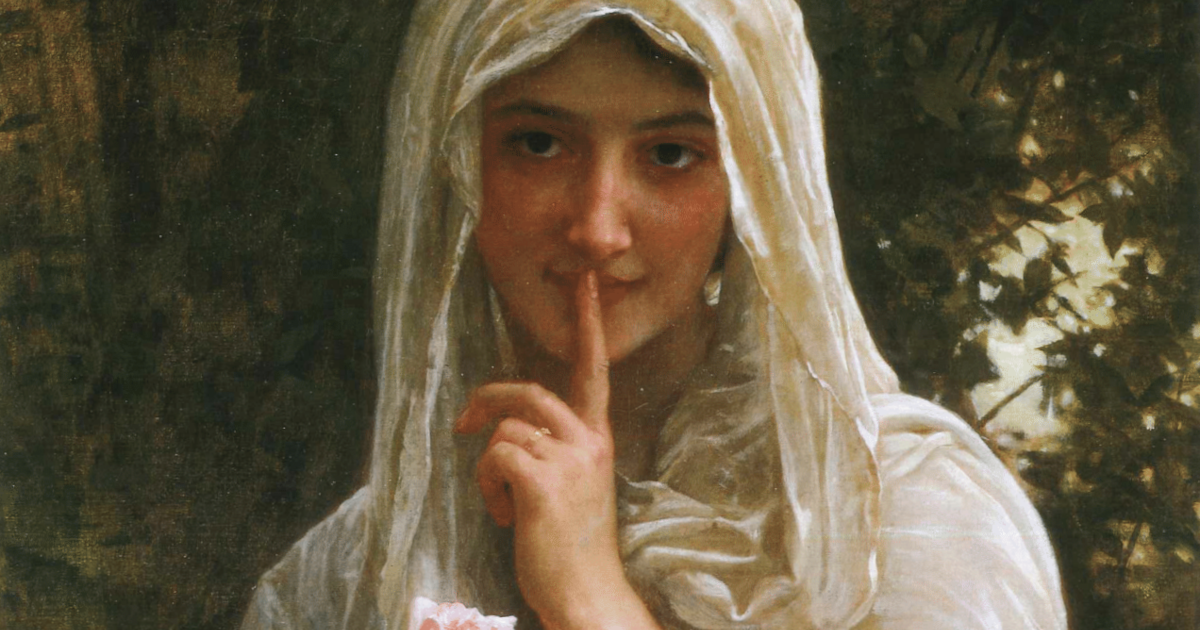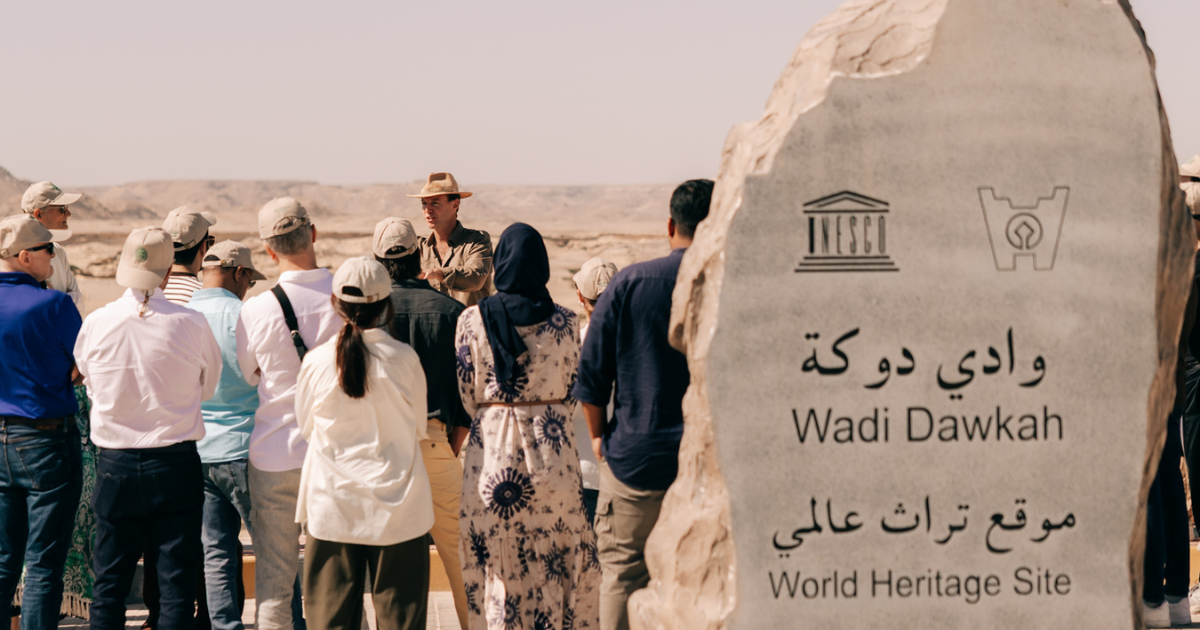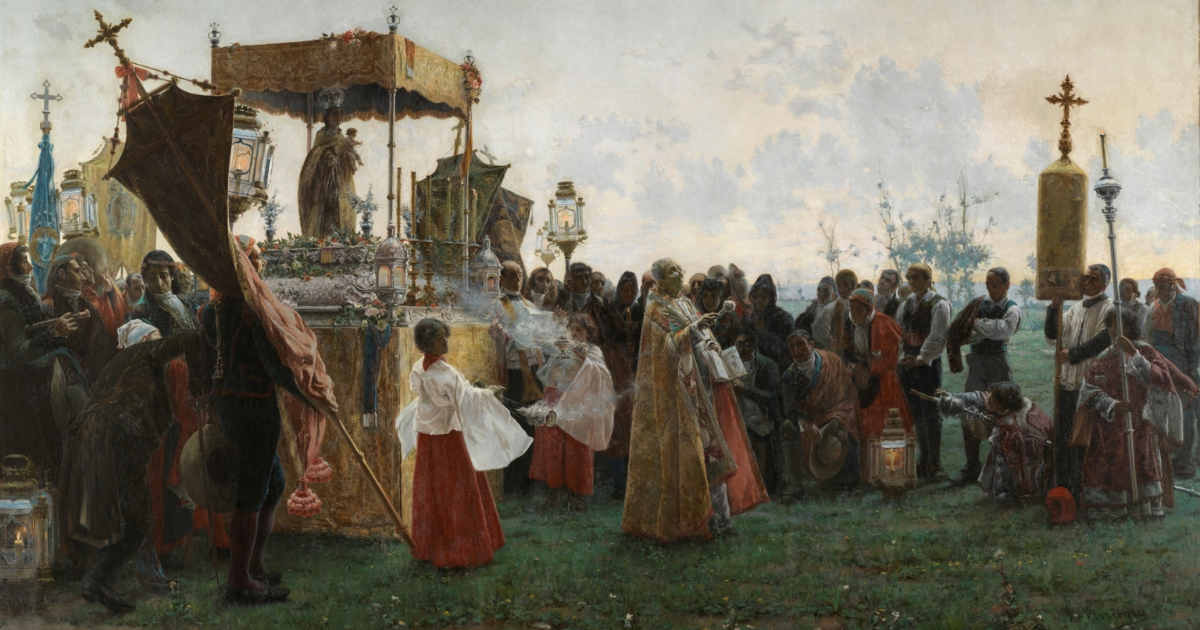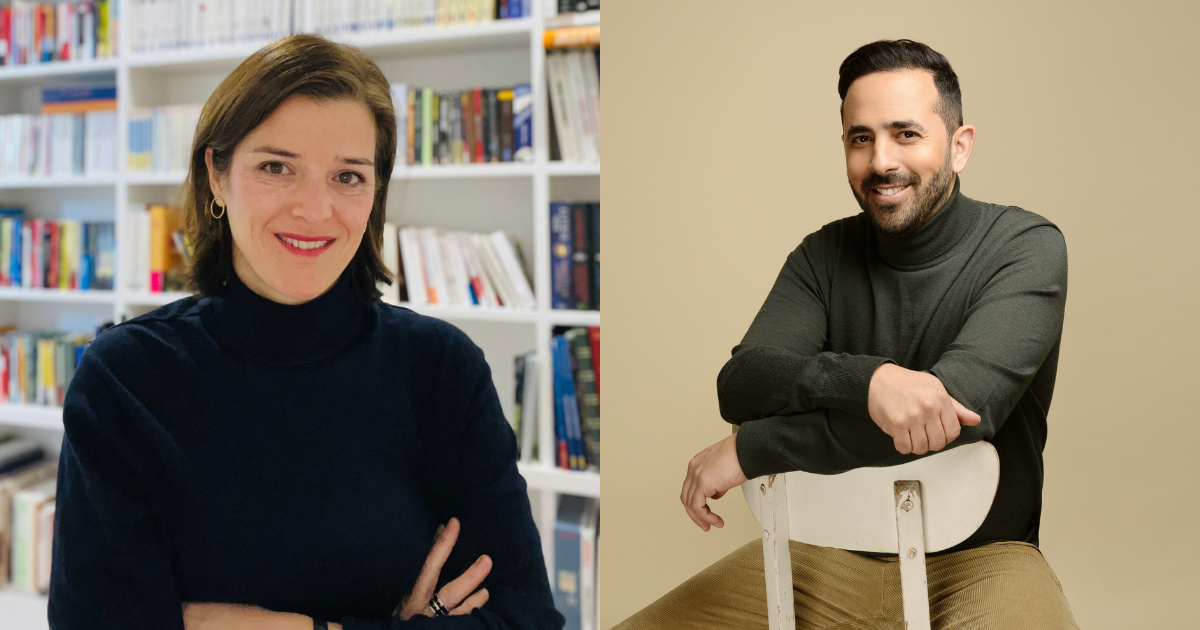Cette publication est également disponible en :
Français
“Abandon all hope of hearing the truth, ye who enter here”: words we might well be tempted to say to the novice taking an interest in perfumery. There is no denying that inventions, secrets and lies are legion in the fragrance universe. Contemporary marketing, with its obsessive need to “sell dreams”, plays its part. But it is far from the only culprit: perfumery has turned mystery into a tradition and invention into an art of living. Critical commentators are quick to pour scorn on the perfume world, as illustrated this year by recently published books from Maïté Turonnet (Pot-pourri, in French) and Gabe Oppenheim (The Ghost Perfumer). While industry truths are sometimes revealed to connoisseurs, the myths that lie at the heart of perfumery are regularly shored up when addressing the general public. From open secrets to copycat lies, lies of omission to workshop secrets, here is a brief overview of the deceptive discourse employed in perfumery. Because, on the one hand, we have to laugh. And, on the other hand, the cult of mystery occasionally has its reasons, and it can be interesting to explore them.
Open secrets
There are secrets everyone, or almost everyone, knows but that are kept alive anyway, thanks to a handful of sales practices. The most emblematic of them is possibly the one about reformulations: “no, no, our perfumes haven’t changed at all since their release, madam!” can regularly be heard in the aisles of large stores. There are, however, less and less people who believe it: even your elderly aunt will sometimes confess to you that her beloved fragrance no longer smells the way it used to. Enlightened amateurs are well aware that, when it comes to the major brands, reformulations are inevitable as well as necessary – to comply with environmental and health norms, or sometimes for economic reasons – and more or less imperceptible. By avoiding mentioning this fact, it is of course possible that a bottle is sold quicker – or does not sell at all. The lack of transparency about a perfume that has changed erodes trust.
Material lies
Perfume is expensive. Very expensive. It has conceivably never been as costly as it is today. Brands regularly try to justify the high prices to everyone astonished by them with regular references to the difficulty of producing ingredients such as iris: “the thing is, we use a magnificent iris that takes three years to dry!” It’s a familiar refrain, and it avoids mentioning that most formulas only contain a tiny quantity of the precious extract while staying silent about the new procedures for treating iris rhizomes which allow them to be dried in a mere three days. In addition to these sorts of difficulties, the price of raw materials is central to many communication strategies, expressed, for example, with the following message: “Did you know that the price per litre of essential oil of oud can reach 30,000 euros?” True. But considering the dose used, a litre of this particular essential oil (which is cited more often than actually used) is enough to fill a huge number of bottles: tens of thousands of them, for a fragrance described, in most cases, as “exclusive”. Perfumes that contain more than two euros’ worth of costly raw materials are rare (which is not necessarily the issue, keeping in mind that the price of a Picasso is not measured by how many tubes of paint went into it).
When you know that a fragrance’s standard packaging, with its bottle, pump and printed box, already costs over six euros per unit, that distributors easily take a third of the retail price, and that an advertising campaign can cost several million euros, it is not hard to see that, in perfumery, the sources of luxury and money are not where we are told they are.
Hucksters’ secrets
Us poor customers are not the only ones to be offered pigs’ ears for making silk purses. The 19th century already had its share of questionable quality ingredients, like the musk sold for a higher price than gold and sometimes cut with blood or dried liver so producers could boost their profits. Some of these practices have been echoed in recent times, but are often swept under the rug. A bit of background: before the 1980s, brands usually received their supplies of raw materials directly from perfumers, known for their intransigence. However, as fragrance fabrication gradually moved into the hands of the large composition houses, acquiring ingredients was entrusted to buyers who were less demanding and quicker to negotiate prices. Between 1975 and 1980, the quality of ingredients began to drop. The Grasse suppliers even had their reputation sullied by accusations of fraud: some of them were diluting ingredients so they could meet the price imposed by buyers putting pressure on them. These ingredients are sometimes called “adulterated” essences, cut with less expensive products: oud sourcers, for example, know that still today it is not unusual to encounter an essence cut with sandalwood and/or sesame oil.
A notable result of the dark days of the 1980s was the emergence of laboratories, such as the one set up by Monique Rémy (now LMR Naturals by IFF), aiming to release on the market products that, while more expensive, were also pure, developed by chemists who could educate their new clientele about the quality of the ingredients.
Copycat lies
In the narrow streets of Grasse and the surrounding area, certain unscrupulous shopkeepers have no qualms exploiting the place’s prestige to squeeze a few more coins from their customers. Their strategy? In front of carefully positioned metal bottles, they discreetly murmur things like “it’s very confidential, but actually [insert name of the fragrance of the moment] is made here, we don’t have the bottles of course, but if you want the perfume, it’s right here.” And hey presto, a shop selling 100% imitations uses a few whispered words to turn itself into a factory outlet for ill-informed holidaymakers. Since perfume formulas are not protected, it is true that copies are not strictly speaking breaking the law. When you move away from Grasse and its olfactory aura, the subterfuge no longer works. Instead, copied fragrances line up in their imitation bottles and packaging with the spread of counterfeiting, the nightmare of every big brand, online, on market stalls and at metro entrances. It may well be illegal, but it seems to be tolerated and provide a living for a host of perfumers, designers and printers. Sadly, it is also part and parcel of the perfumery system.
Natural inventions
“My perfume is 90% natural” is something we are hearing more and more. Only to be topped by “well mine is 100% natural!” from competing brands. A new form of competition for a new era! We should remind distrustful customers that to produce a “90% natural” fragrance, the alcoholic solution (a mix of alcohol and water) that makes up the remaining 90% of a perfume dosed at 10% simply has to have a natural source – for example, be made from beetroot, which is already the case for most products). The “100% natural” label corresponds to a reality that is a little too complex to go into fully here, but has already been discussed in an article on our site. The main conclusion to be drawn is that, in many instances, a 100% natural perfume can be created 100% in a laboratory thanks to the miracle of green chemistry – which has the added advantage of avoiding depleting water and land, something we can only be happy about.
Secrets of the pyramids
“So what exactly is in this perfume?” is the question the demanding customer always asks the sales staff. Who will answer by enumerating the mysteries of the “olfactory pyramid” like school children reciting poetry. Top notes followed by heart and base notes, starter-main-dessert, introduction-development-conclusion, rock-paper-scissors: all good things come in threes, a principle applied to fragrances by perfumer Jean Carles 100 years ago and an inescapable part of perfumery ever since. If we want to travel, we can always read the olfactory pyramid for Lancôme’s Poème, known for citing the blue poppy from the Himalayas, lychee flower and desert datura; in other words, plants impossible to use in perfumery, other than for conjuring up sweet dreams. So what really is in my bottle? Does the olfactory pyramid refer to the actual content, olfactory effects or inspirations? It remains a secret: the rule is never to specify, always to muddy the waters.
The Poème pyramid, however, certainly is unique and memorable (as is Jacques Cavallier-Belletrud’s creation, with more reason). Fate is not as kind to all fragrances. On long winter evenings we could amuse ourselves trying out the exercise in reverse by removing the names and brands attached to pyramids. If I said to you “top note: bergamot, heart note: ambergris and Damask rose, base note: Cistus labdanum” what would you say? The fact is that it could be 50% of perfumes on the niche market as well as Dior’s Ambre nuit. In this particular light, the pyramids soon shed their mystery, if not reveal their absurdity. Play this form of Jeopardy! with your parfumista friends for an evening of fun and laughs all round. With this degree of mystery, they are no longer pyramids, they’re Sphinxes.
Techno-lies
“Artificial intelligence will revolutionize perfume!” proclaim the technophiles. Some of them dream of accords that have never been smelled before, formulas set for global success. Marketing loves to dangle the promises of its new toy. But forgets to give voice to perfumers and developers, who are keen to point out that artificial intelligence is incapable of innovating outside the realm of “happy accidents” (whose “happy” nature only human perfumers can identify) because it works using big data, banks of existing formulas that the algorithms then reproduce. AI is thus first and foremost a tool that offers quickfire repetition and the recombination of existing data. It can only process a scenario it has already seen or whose rules it has been provided with: there’s no point hoping it will be the next Alberto Morillas or Germaine Cellier. Isn’t what we love most about these perfumers their gift for devising brand new smells springing from emerging worlds, as they throw off the shackles of the rules?
Over and above marketing, however, what AI is likely to revolutionize is the perfumery labour market once perfumers have fed all their formulas into the machines, trained the models and validated the results. The more cynical companies will then only need a handful of part-time specialists to keep their tool for rehashing old hits up and running.
Self-made fabrications
The perfume industry’s culture of secrecy and the marketing-fuelled endless need to stand out have spawned a monster: the upstart who shouts from the rooftops “I’m the one who made it!” while being incapable of writing a complete formula. The latest scandal: Olivier Creed, the subject of Gabe Oppenheim’s book The Ghost Perfumer, was shown to have claimed many successes that were actually attributable to the discreet but talented Pierre Bourdon. Unfortunately, this story is not unique in the perfume industry, far from it.
The first person to make use of these subterfuges is considered to be Paul Poiret, who devised the “designer perfume” in 1911 with Les Parfums de Rosine. While he liked to have his photograph taken in the laboratories near the stills with a concerned look on his face, he happily entrusted the creation of his perfumes to talented composers such as Maurice Schaller and Henri Alméras. He succeeded in taking on the aura of a fragrance creator, a figure gaining in stature at the time.
Before Olivier Creed, many people presented themselves as “perfumers” even when they were first and foremost talented businessmen. Perhaps the most famous was François Coty, who is still credited with sole authorship of all his brand’s successes despite the scant physical evidence of any solo creative activity. Coty collaborated closely with the Chiris establishments, where he had learned to work with raw materials, and where renowned perfumers such as Vincent Roubert, who eventually joined his company in 1925 as technical director, presided. Although François Coty was doubtlessly not the omnipotent composer his legend would have us believe, his life as a marketing visionary and brilliant creative director has left a lasting mark on the 20th century. A century that valued men who were absolute masters and creators of their empires, communicating as little as possible about the complexity of the industry, making it easier to get ahead by simply presenting oneself as a “perfumer”, even if it involved a few white lies. Even though the trend has waned, each year still brings its share of brazen entrepreneurs trying to pass themselves off as more talented than they are – so be careful, at least until it becomes more fashionable to say how very rare good creative direction is! Fortunately, various sites (which are not free) such as Fragrances of the World set the record straight, as far as possible and depending on how accessible the facts are, giving credit where credit is due to the perfumers behind the scenes as well as creative directors.
Lies of omission
Is it possible to be a perfumer and still fall into the trap of oversimplification? It would seem so. A study of the history of the industry almost invariably reveals that behind every lone creator on his pedestal is an array of formidably talented people, often women, who preferred to remain in the shadows – or were given no other choice. Even Edmond Roudnitska, as Maïté Turonnet explains in her book, had his little secrets: Moustache, released by Rochas in 1949, was probably created by his unassuming wife Thérèse (now famous thanks to Frédéric Malle’s wonderful Parfum de Thérèse), a former chemical engineer he had met at De Laire, now Symrise. And it was the discreet Marie-Thérèse, the wife of Edgar de Laire, nephew of the company’s founder, who came up with the brilliant idea of teaming up synthetic molecules with natural raw materials to make pre-perfumes in 1891.
More recently, Jean-Paul Guerlain’s reputation has made us forget the role of the perfumer who assisted him, Anne-Marie Saget, without whom Parure (1975), Derby (1985) and Samsara (1989) would no doubt never have seen the light of day (the latter was probably subjected to an inhouse competition before being finalised by Jean-Paul Guerlain).
Another oddity comes in the form of fragrances attributed to perfumers who didn’t expect that level of recognition. One example is Calvin Klein’s Obsession (1985), often credited to Jean Guichard in the media when it was actually the work of Bob Slattery, who sadly died shortly after the perfume was released. It is likely that the press, when trying to interview the perfumer and only getting access to his close collaborator, ended up forgetting to name him, and slip-ups with copying and pasting took care of the rest.
Then there are the fragrances that took a particularly tortuous and dramatic path, such as Yves Saint Laurent’s Opium (1977) – although we will refrain from recounting its genesis for the time being since so many contradictory narratives exist. It is worth noting, however, that despite often being credited to Jean-Louis Sieuzac alone, the perfume, strongly influenced by Estée Lauder’s Youth Dew, also passed through the hands of Françoise Marin and Raymond Chaillan under the attentive creative direction of Jean Amic, who ran Roure, now Givaudan.
When a brand has a plan for a new fragrance, it is usually submitted to a composition house and not to a specific person. The formulas, while very confidential, can therefore be accessible to several of the house perfumers and, since they do not work in isolated cells, they regularly discuss their various creations, helping each other and feeding the accords they have developed independently into the same formula. Thankfully, today’s brands are increasingly taking into account the collaborative character of perfume creation, as illustrated by the stance taken by composition houses such as IFF as well as brands like Lancôme, which recently credited Shyamala Maisondieu, Adriana Medina and Nadège Le Garlantezec from Givaudan for the creation of Idôle. Do these names always reflect the reality of fragrance development? Are they enough to attest to the collective aspect of creation? It is not at all likely, and plenty of people often need to be added to (or sometimes removed from) the credits!
Workshop secrets
Designing a perfume means doing a lot of research. Many brands insist on the fact that a particular fragrance took years to develop, or that another required hundreds of trials. However, it is not uncommon for all these efforts to end up as a damp squib, with the precious elixir having nothing to recommend it other than its all-purpose character, or worse, turning out to be the spitting image of a well-known fragrance. Are perfumers dunces? Absolutely not. On the other hand, they are often under pressure and advised to put the hundreds of bottles cluttering their shelves to good use. An accommodating brand has submitted a slightly vague brief? Maybe it’s time to look for a previous trial that might be right for them. An unadventurous house is eyeing a competitor’s success? It should be possible to quickly come up with a sufficiently disguised copy. In any case, any self-respecting composition house spends a substantial amount of time dissecting its rivals’ successes and learning how to reproduce them, and then draw inspiration from them. Successes that, like Jean-Claude Ellena’s L’Eau parfumée au thé vert for Bulgari, may themselves be old trials slumbering on a shelf having been rejected by short-sighted creative directors.
Secret lists
Choosing which composition house to work with is crucial for a perfume brand. But is it really a free choice? Not as much as you might think. When a brand says “we have chosen the best perfumer for this project” there is sometimes a catch. Why do some brands keep working with perfumers from the same composition house even after a few commercial failures? Why does Tom Ford, after a string of successes with Firmenich, now entrust his creations to Givaudan’s teams? Why do the big brands never work with independents? Loyalty (or cronyism) certainly comes into play, but so do core lists.
Which refer to the tendency by big groups not to brief all the composition houses for a given brand, let alone all the perfumers. They only talk to the ones on their core lists. How do you become part of this elite group? Excellence is not enough. You also have to pay, in one way or another. In particular, through discounts and other commercial arrangements that are constantly being renegotiated. It is thus understandable that small independents do not have what it takes to play the game. And if these big clients decide the offers are not sufficiently attractive, they can simply exclude a house from their core list the following year.
Secret origins
There is a word that has invaded marketing in recent years: “storytelling”. And if there is one area where perfumery has no lessons to learn, it is this one. There are very few houses that have never embellished, or even completely invented, the story of a fragrance’s genesis. Legend has it that Shalimar was born the day Jacques Guerlain added a dollop of ethylvanillin (an artificial molecule, more intense than vanillin, that was then new) to Jicky, the house’s classic fragrance. Legend says a lot less about how Shalimar, released in 1925, was a dead ringer for Coty’s Emerald, released four years earlier.
More daringly, in her 1985 autobiography Estée: A Success Story, Estée Lauder recounts how she had a revelation about the incomparable quality of her sense of smell and thus single-handedly created Youth Dew in 1953 by mixing together aromatic oils (without of course mentioning Josephine Catapano, the real perfumer). This taste for fictionalization was also shared by Coco Chanel, known for supplying journalists with a good yarn, even if it meant making a few small adjustments to reality (the Chanel website, strangely specifies in a tribute that “the Sycomore perfume was created by Gabrielle Chanel in 1930″, forgetting Ernest Beau and Jacques Polge in the process).
So there’s nothing surprising in the press release we received last week, telling us that for the creation of Fenty Eau de Parfum, “Rihanna personally selected each ingredient in its purest form and worked with world-renowned LVMH master perfumer Jacques Cavallier.” An alternate reality thus springs to life, in which Riri juggles with hedione and methyl anthranilate before entrusting her inspirations to Jacques Cavallier, not much more than her assistant. A science-fiction story every bit as good as the ones that preceded it.
Top secret
One of the great paradoxes of the perfume industry is that it presents itself as heir to rich traditions while refusing to confront its history. There is a general tendency to avoid, as far as is possible, talking about François Coty’s fascist sympathies, Ernest Beaux’s troubled military past, the pro-Nazi proclivities of Eugène Schueller, founder of the L’Oréal group, and Coco Chanel’s scandalous liaisons with the occupying forces during the war, notably described in Hal Vaughan’s book Sleeping with the Enemy: Coco Chanel’s Secret War.
When the history of literature, music or painting is built on the ambiguities surrounding the lives of creators, on the moral tug-of-war sublimated by their works, the goal is to make us believe that all the great figures of perfumery are worthy of winning a Nobel Prize for virtue. A marketing strategy that is undoubtedly fleetingly effective, but which unfortunately does not favour the enrichment of olfactory culture in the long term. How can we spark anything other than a passing commercial interest in perfumery if its zealots insist on living in a parallel reality where creators suffer no torments or rough patches, have no convictions or commitments, where they are made of pure devotion like the candy saints who fill the windows of stores selling religious trinkets? Just like any other culture, perfume culture can only evolve by facing up to its contradictions, its dark side which is also part of history.
Untruths and influence
The picture would not be complete without mentioning the spokespeople who obediently pass on much of the discourse described above: influencers. They can often be recognised by their ability to reel off the contents of press kits without thinking about it as they parade products that are quickly standardised due to limited vocabulary (“it’s great”, “it smells fantastic”). As a result, social media platforms have been taken over by the contemporary version of a TV shopping channel where the presenter is paid in bottles of perfume.
As their name suggests, influencers are looking for an easily influenced public, especially as they are not subject to rules for journalists, which stipulate that “in no case can a professional journalist promote a product or company, in whose sale or success he or she is materially concerned, in editorial form.” This allows the less honest among the influencer population to earn a fee while claiming to be impartial (a vice not unrelated to journalism of course, even though it does not rely on the same need to grab attention on social media). However, now that there are so many more of them, plenty of influencers spend hours preparing their speeches only to receive nothing more than a bottle of perfume in return. And not always a great bottle. So it is no longer clear whether their lies should annoy us or arouse our pity.
Romantic lies and fragrant truths
Since I like to go and smell the latest releases in perfumeries, I regularly experience a certain scenario: when I talk to the people in charge of sales, they always end up “testing” me: “you work in perfume, don’t you?” “No, I don’t.” “But you know the business well?” “Yes, sure, a little.” This answer seems to allow them to tick the mental box “he’s one of ours”, and their tongues are immediately loosened: “yes, we’re told not to talk too much about that”, “oh, actually this perfume seems to have been made like that,” and so on and so forth. Individuals who previously talked like robots become brighter, warmer, something that seems to me infinitely more desirable for everyone, because who wants to buy a bottle from a vending machine, even if it does talk? Would the industry collapse if its sales techniques suddenly became a little more honest and human? I sometimes take these slightly naive considerations home with me, forgetting the vast commercial stakes underpinning all this discourse, which often borders on the absurd.
Nevertheless, we could imagine a few loopholes for letting the truth out in the ruthless world of perfumery. Some of its lies exist only for the sake of short-term profit (with no guarantee that a revelation will not cost much more later down the line), or because the zeitgeist seems to dictate the use of flashy, deceptive and simplistic language to lure a public no one wants to take the time to educate about the industry and its history. When the illusion is broken, however, that same audience is quite capable of vilifying its former idols and burning them to the ground, as has happened in other industries. Does this mean letting go of the reverie and romanticism that still surround perfume? Not necessarily. It was Aragon who developed the notion of “mentir-vrai”, “true lying”, a way of writing about reality which reveals it by deviating from it, distorting it, but always refusing to make it appear what it is not, and avoiding considering the reader as a “target” to be “influenced”. Many perfumers are revising their discourse on perfume and reinventing each person’s position vis-à-vis perfume creations. Could these subtle narratives be brought to bear on the platforms that live off plundering our “available brain time”, now so coveted by the big industrial machines? Nothing is less certain.
___
REPORT « REINVENTING PERFUMERY DISCOURSE »
- Reinventing perfume discourse, introduction
- Olfactory dissonance, between discourse and reality
- Interview of Christophe Laudamiel: “50% of perfumery is plagiarism or remixes, it’s time to adopt a code of ethics”
- The press kit, the art of staging the immaterial
Main visual: Le Secret, by William-Adolphe Bouguereau, 1894 (detail). Source: Wikimedia








Thanks for your article, Clement!
As a Perfumer, it is always fun to hear the stories.
Like the time I called out Roger Bird’s fragrance Enigma in my interview article in Perfumer and Flavorist magazine, then he unfriended me, and rebranded with colored bottles so the mistakes could be hidden better. Gosh, I had to go into therapy over that one.
Thanks for the text that is full of information.
YES! Great article, thank you.
Thank you for this article Clement! It is refreshing to read this kind of information which is well known to insiders but hidden to the end users behind all those mind fuddling blurbs. Especially in niche perfumery, story telling has reached unbelievable heights but often serves to hide the lack of real quality and inspiration….